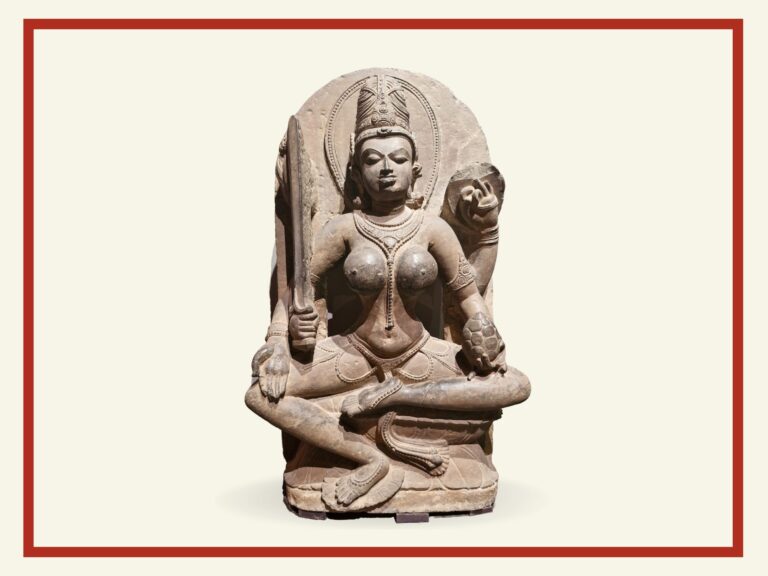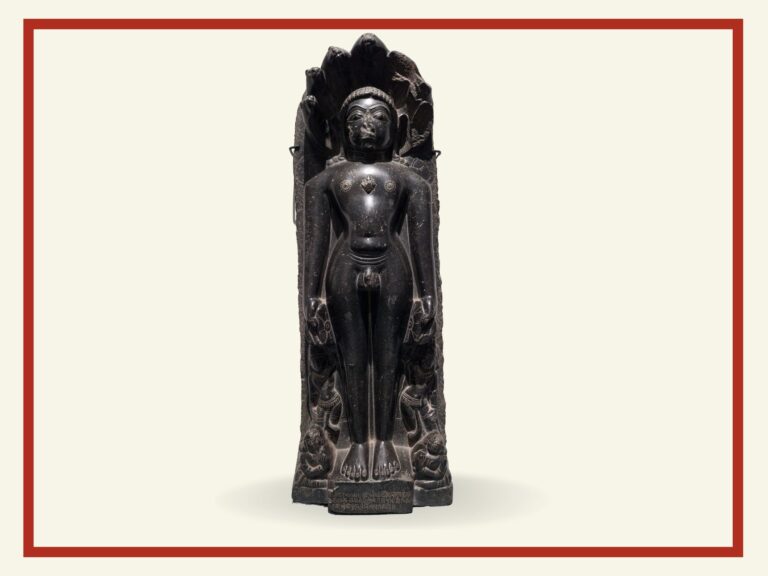Goddess Saraswati
Goddess Saraswati, revered as the embodiment of knowledge and the arts, is a figure of great significance in both Hindu and Jain traditions. Her iconography is rich with symbolism, each attribute representing a facet of her divine role. The veena, a classical Indian musical instrument, signifies her patronage of music and the performing arts. The noose in her hand represents her power to restrain the forces of ignorance and ego, while the rosary she holds symbolizes meditation, spirituality, and continuous learning.
In the context of Hoysala art, the absence of the manuscript in the sculpture of Saraswati is noteworthy. This could suggest a focus on the other aspects of her divinity, particularly the spiritual and meditative elements represented by the rosary. The long-beaded necklace, prominently featured in the sculpture, is a testament to the exquisite craftsmanship of the Hoysala style. The intricate designs carved into the fine-grained stone are characteristic of the Hoysala era, renowned for its architectural and sculptural sophistication.
The Hoysala dynasty, which ruled between the 10th and 14th centuries, is celebrated for its contribution to art and architecture, particularly in the region of Karnataka. The temples and sculptures created during this period are distinguished by their detailed workmanship and elaborate ornamentation. The use of soapstone allowed for intricate carvings, enabling artists to achieve a level of detail that is almost unparalleled12.
The Goddess Saraswati sculpture in the Hoysala style would have been created with the same meticulous attention to detail, capturing not only the goddess’s spiritual attributes but also the cultural richness of the period. The necklace’s prominence in the sculpture could also be symbolic, perhaps representing the continuous flow of knowledge and wisdom that Saraswati bestows upon her devotees12.
The Hoysala temples, now recognized as UNESCO World Heritage sites, serve as a window into the past, showcasing the artistic mastery and spiritual depth of the era. The sculptures within these temples, including that of Saraswati, are not merely decorative but are integral to the temple’s spiritual narrative, inviting devotees and art enthusiasts alike to engage with the divine1.




